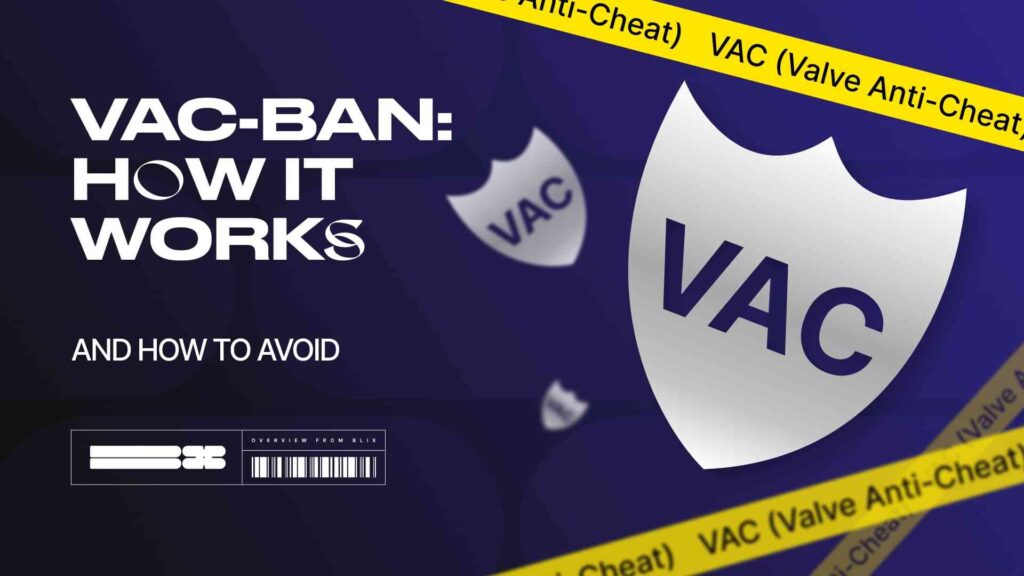In the first version of VAC, the anti-cheat system banned cheaters almost immediately after their detection, and the ban lasted for two years. However, Valve introduced a new policy called ‘delayed bans’ with the second version. This action means that cheaters are not automatically banned. Instead, Valve waits approximately 3-4 weeks to identify as many cheaters as possible before banning them. The idea behind this policy is to catch more cheaters by delaying the initial ban so that once a new hack tries to circumvent the VAC system, it will spread among the cheating community, allowing Valve to identify and ban as many cheaters as possible.
Contents
Highlights
- The information on how Valve Anti-Cheat (VAC) works
- Explanation of the possibility of removing the VAC-Ban
- Different kinds of cheats that can trigger VAC
- How thirty players were caught on PGL Major Copenhagen 2024 Open Qualifiers
About The Valve Anti-Cheat (VAC) System
Valve Anti-Cheat (VAC) is a tool developed by Valve to prevent cheating in games on the Steam platform. It was first released in 2002 with Counter-Strike. When VAC detects cheating, it doesn’t provide the player with any specific information, such as the type of cheat or the date of detection. However, the player is notified and permanently loses access to online “VAC protected” servers of the game they cheated in. Additionally, restrictions are applied to the player’s Steam account.
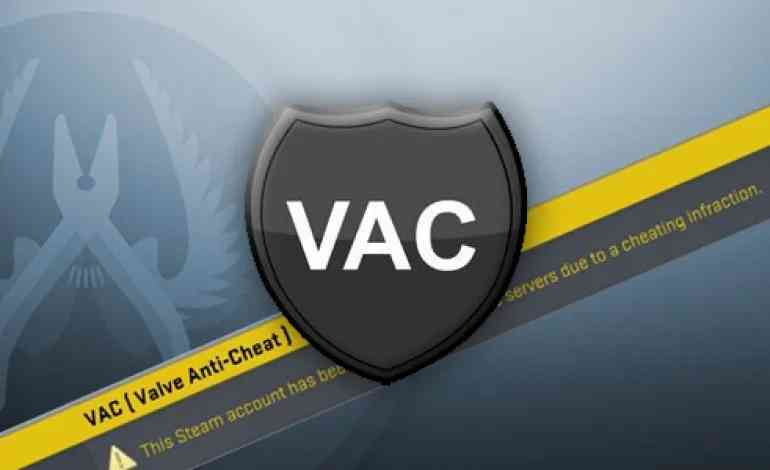
Valve has implemented VACnet, a deep learning system designed to detect cheaters and send them to Overwatch, since 2017. VACnet constantly trains and learns about cheats and cheaters to improve the anti-cheat system. Regular updates and enhancements are necessary to ensure effective prevention of cheating.
How Does the VAC Ban Work?
Valve’s Anti Cheat Software operates in various ways. It scans the running processes on your computer for cheats and checks for any code injection into the game during launch. Additionally, it monitors any alterations made to the game’s files and any readings or writings in the game memory, a common tactic cheats use. The software also maintains a library of cheats already known to Valve, which are automatically “detected”. If you’re found running a detected cheat, you will almost instantly be banned from playing on any VAC Secured servers, including official servers. Moreover, VAC Bans will prevent you from accessing third-party platforms for CS2. Finally, VAC Bans will be displayed on your profile as VAC Bans.
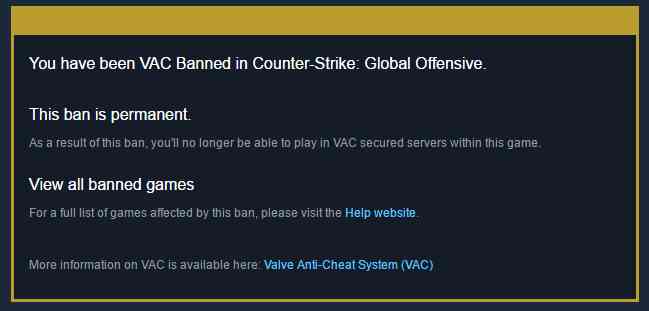
However, the exact workings of the VAC are only known to its developers and kept secret for good reasons. The text above is a rough idea of our understanding of how it works.
How Long Does a VAC Ban Last?
It’s important to note that VAC bans are a permanent consequence for players whom the system has found to use cheats or unauthorized software. Once the Valve Anti-Cheat system detects this behavior, the player will no longer have access to any VAC-protected servers. It can also limit certain game features and the ability to participate in competitive matches, trade skins, and join events.
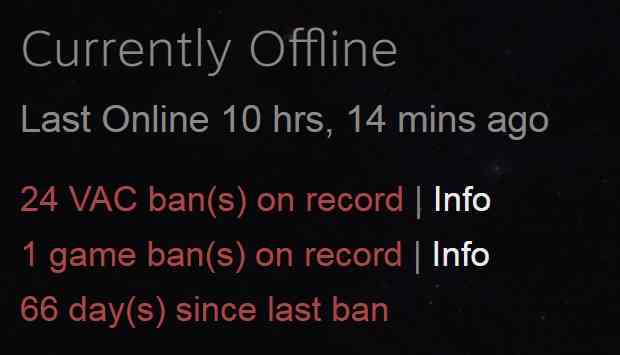
It is of utmost importance to always play fairly and abide by the rules to avoid facing severe consequences. We all understand that mistakes can happen, but taking responsibility for such actions is essential to improve everyone’s gameplay. Our community is built on trust and respect, and we encourage all players to uphold these values.
How To Avoid VAC-Ban?
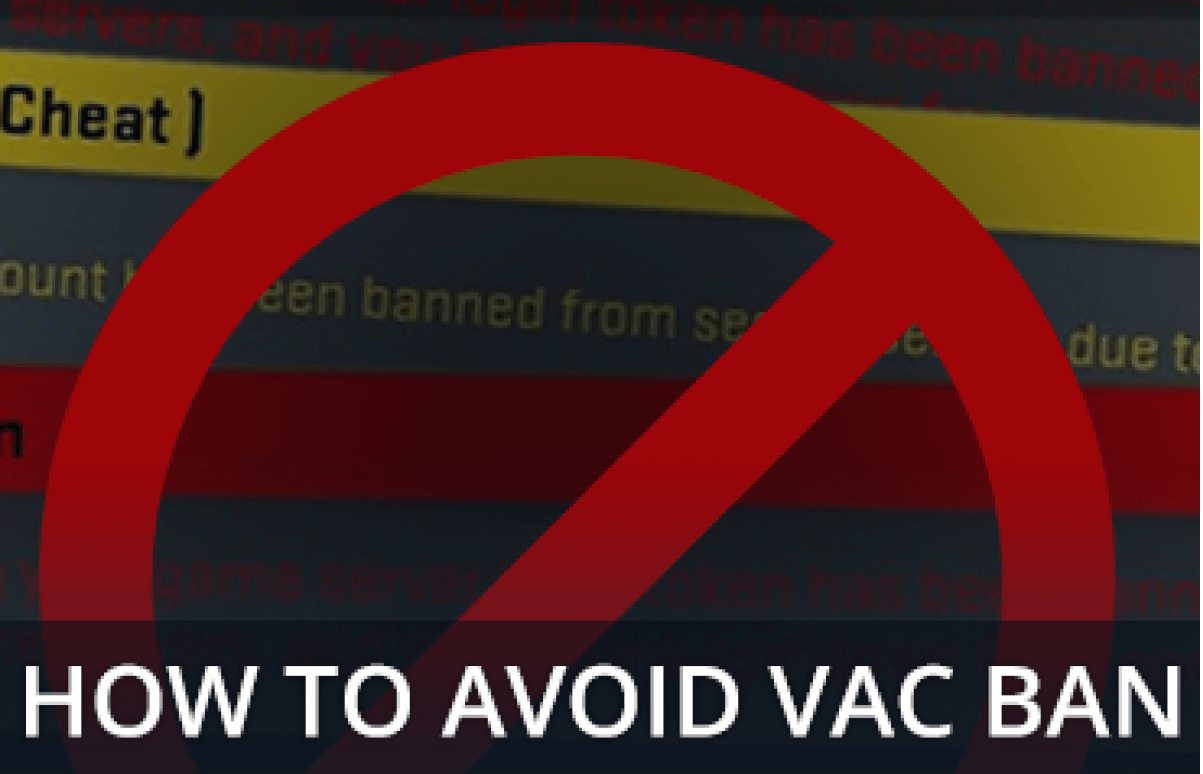
To avoid getting banned from VAC-Secured servers, it is important to only play on trusted machines. If you are still determining whether the machine you use to connect to Steam may have cheats installed, such as in a computer club, it is best to avoid playing on VAC-Secured servers altogether. Additionally, it is recommended that you scan the machine for viruses, trojans, and keyloggers to ensure its safety.
If you are using Steam on a computer with multiple user accounts, it’s crucial to log out completely once you’re done. If you leave the “Remember Password” option enabled, or Steam is simply minimized to the Windows system tray, another user could access your account. Simply exiting the application fully will keep your account safe and secure. So go ahead and game on with peace of mind!
When modifying your favorite games with excellent scripts and custom skins, it’s always better to be safe than sorry. That’s why we suggest downloading custom content from trusted sources only. We know how important it is to protect your account and avoid getting banned due to sneaky cheats from hackers. To help you out, we’ve got a link to Steam Support’s Account Security Recommendations for even more helpful tips.
What Triggers a VAC Ban
VAC is designed to detect any software interacting with or hooking directly to the game. So, if you’re running any program hooking to CS2, you could risk a VAC ban. Even something seemingly harmless as a skin changer is considered a modification of the game that Valve doesn’t approve of. But don’t worry – plenty of awesome skins are available for CS2 at reasonable prices, so there’s no need to take risks.
Here’s the list of most popular cheats (these hacks are typically available as a standalone or included in a multihack bundle):
Wallhack
A wallhack cheat is a type of cheat that enables a player to see through walls. This cheat displays hidden objects or replaces opaque game textures with semi-transparent ones. Hackers can see enemies before they would typically be visible. However, as the game engine only renders the immediate area around the player, this cheat allows them to see the entire map simultaneously.
Speedhack
Speedhacks are cheat tools that allow players to move faster than usual, often making them difficult to target, hit, or even see. These cheats work by sending false synchronization data to game servers. Because speed hacks unnaturally increase the player’s speed, other players can easily detect cheaters who use them.
Aimbot
Such software programs can predict or script a player’s aim, allowing them to anticipate an enemy’s position. Usually, these programs help to aim for the enemy’s head, and they can ignore the effects of recoil and bullet spread.
Auto Firing/Triggerbot
Triggerbots are often used alongside aimbots and automatically fire at enemies in the player’s crosshairs. When used as a standalone cheat, triggerbot is relatively more complex for other players to recognize. It can also be set to ignore players behind walls, making it easier to hide the cheat.
PGL Major Copenhagen 2024 Open Qualifiers: Cheating and Bans
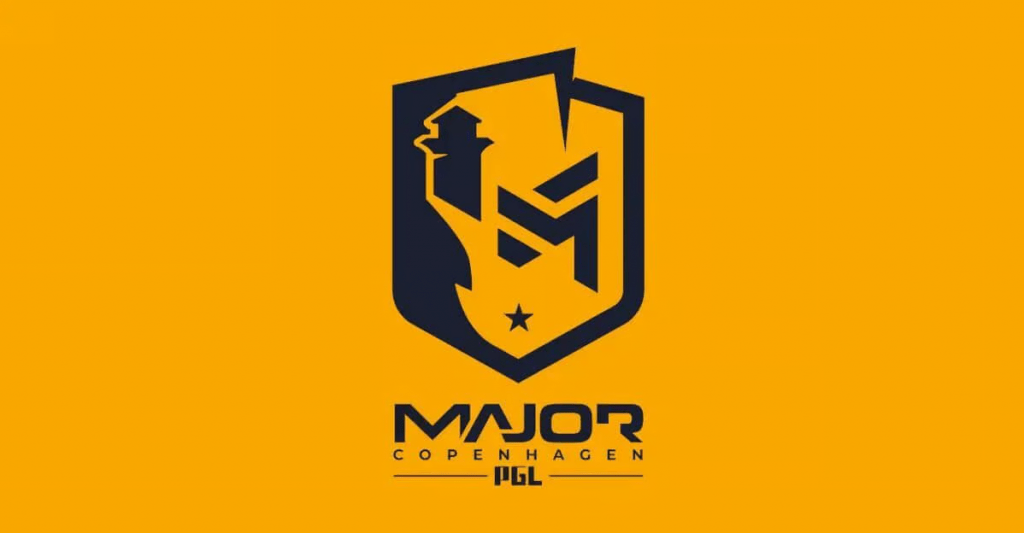
Valve has created an anti-cheat software called Akros, which is used to detect cheating activities during open qualifying tournaments. Recently, the open qualifiers for the RMR to PGL Major Copenhagen 2024 were held in eight different regions from January 8th to 17th. It has been reported that over 30 players were caught using third-party software during these qualifiers.
Akros published a tweet on X (Twitter) but later deleted it: “Our experience during this event has taught us one very important thing: Cheating in CS2 is utterly and completely out of control”.
The tweet received a strong response from CS2 players and fans who believed it unfairly stereotyped the community as cheaters. Akros eventually deleted the tweet as the debate grew more contentious.
FAQ
Can a VAC ban be lifted or appealed?
Valve’s official appeals process may require submitting a support ticket on Steam. However, the chances of a successful appeal could be higher.
What activities can lead to a VAC ban?
Using cheats, modifying game files, or account sharing can result in a VAC ban. It is essential to refrain from engaging in such activities to avoid penalties.
Does a VAC ban affect all games on my Steam account?
VAC bans only affect the game where the cheat was detected. Players can still access insecure servers for that game.
Is it possible to remove the ban?
In most cases, VAC bans are permanent, but if a VAC ban is determined to have been issued incorrectly, it will automatically be removed.


